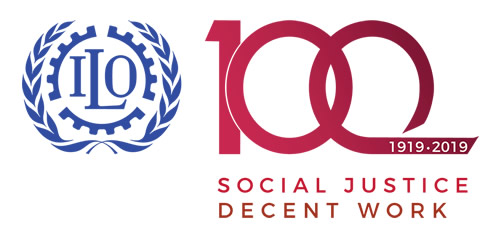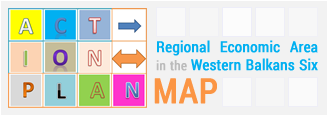Benchlearning among Public Employment Services
We are working with Public Employment Services from the Western Balkans to create a systematic connection of performance comparisons and mutual learning opportunities in line with best EU practice
Benchlearning among Public Employment Services (PES): process and key results
Inspired by the European experience, the Western Balkan PES offices implemented for the first time a benchlearning initiative under the ESAP project. Benchlearning implies the creation of a systematic and integrated link between performance benchmarking and mutual learning activities. A methodology for benchlearning has been prepared, which entails both a quantitative and qualitative assessment. Quantitative indicators have been collected and include the transition from unemployment into employment by gender, age group, qualification level and duration of unemployment, the number of people leaving the PES unemployment records for employment or other purposes. The qualitative benchmarking component includes a self-assessment and an external assessment. This exercise aims to result in a better and more profound understanding of each PES with regard to 21 aspects of their work that are grouped into the following sections:
Section A: Strategic performance management
Section B: Design of operational processes
Section C: Sustainable activation and management of transitions
Section D: Relations with employers
Section E: Evidence-based design and implementation of PES services
Section F: Management of partnerships and stakeholders
Section G: Allocation of PES resources
Key deliverables include 6 self-assessment reports and 6 external assessment reports as well as a regional overview of the benchlearning exercise among Western Balkan PES offices. Follow up actions at the regional level include the development of a proposed roadmap for management by objectives and guidelines for local employment plans, as well as a regional EURES readiness analysis.
Key Results
According to the findings of the benchlearning assessments, PES offices in the Western Balkans are comparable to most post-socialist EU Member States in terms of the activities and processes that can influence their performance. The Western Balkans PES score relatively high on the sustainable activation of the unemployed, managing transitions between unemployment and employment, the design of operational procedures, job matching tools and partnerships. In particular, process standardization and ICT are fairly well developed across the region. Strategic performance management and resource allocation score around the average, while the weakest area is evidence based design and implementation. In particular, most PES can further improve in quality management, the effectiveness of ALMP, evaluations, engaging employers, and resource management.
Average scores in the external assessment by section and country

Strengths and weaknesses in the typical PES of the region
| Enabler section | Strengths | Weaknesses |
|---|---|---|
| (A) Strategy, Performance Management |
The foundations of performance management are present: annual goals are derived from a national strategy, and there is a target setting system. Performance is monitored regularly. |
Targets are typically set in a top-down procedure and not translated into key performance indicators (KPI), or KPIs are not sufficiently focused on key areas. Performance indicators are not systematically used to adjust procedures in order to improve effectiveness. PES staff are not informed about performance monitoring outcomes. |
| (B) Processes and ICT | Service processes and standards are clearly defined and most PES have detailed written protocols. There is an ICT system that collects data on jobseekers and jobs and supports most aspects of counsellors work. Some services are available on-line. | Quality management systems are typically missing, or weak. Though some services are available online, the choice of various channels of interaction between the PES and the clients are not systematically managed. Client segmentation is usually not automated. |
| (C) Services and ALMP | Most PES use some form of profiling, segmentation of jobseekers and individual action plans (IAPs). | Profiling typically focuses on formal skills (and ignores soft skills). Employer segmentation is rare. IAPs are not systematically tracked. The resources for ALMP are limited. |
| (D) Employers and matching |
All PES have fairly elaborate on-line job matching tools and many have an automated matching tool. | PES typically do not have an employer strategy, nor a specialised unit for employer services. |
| (E) Evaluation | Some PES conduct evaluations on an ad-hoc basis. | PES typically do not have regular evaluations, impact assessments or pilots. |
| (F) Quality of Partnerships | Regional PES offices have some autonomy to establish partnerships with local actors. | |
| (G1) HR management | PES have motivated staff and established systems for regular staff training. | Counsellor caseload is high. Staff performance incentives are weak. |
| (G2) Funding | Budgeting is typically centralised but there is some flexibility in the use of resources. | Budgets are restricted especially for financing ALMPs. Budgets do not depend on past performance. |
Good practices
| Country/good practice | Description | Enabler |
|---|---|---|
| Albania | ||
| Action Plan | ensures that responsibilities of respective institutions are well-coordinated | A1 |
| Integration of PES register with other databases | covers the Civil Status Information System, Tax System, Compulsory Health Care System, Economic Assistance System. The integration increases the data accuracy | B2 |
| Employer scoring system |
General Directorate scores employers in ALMP and then decides whom to collaborate with | D1 |
| Good collaboration with other institutions | cooperation in implementing ALMPs with institutions of a higher rank that PES depends on | F2 |
| Autonomy (also financial) of regional PES offices | enables establishing partnerships and agreements with local level actors | F |
| Bosnia and Herzegovina | ||
| Local Partnership for Employment (LPE) | active cooperation within local labour market actors (schools, employers) | F2 |
| IT infrastructure | IT application where front-line staff is directly involved in upgrading it | B2 |
| Pilot project | a pilot office through which counselling and job mediation were designed and established | E2 |
| Mobile office | in the area with no local offices | C6 |
| The Former Yugoslav Republic of Macedonia | ||
| Human resources | sufficient number of staff dealing with counselling | |
| Skills and skills-needs assessment | unemployed and employers are surveyed to identify skills and skills-needs | D3 |
| HR department at a central level | responsible for staff trainings, change of work place (also within organisation), motivation schemes etc. | G1 |
| IT system | enables keeping good records of unemployed and the employees | B2 |
| Cooperation with employers | in the form of trainings and fairs | F2 |
| Good internal communication | everyday communication of senior with middle management and across all staff levels | A3 |
| Staff surveys | twice a year, enables regular feedback | A3, G1 |
| Entrepreneurship trainings | offered to unemployed |
C3 |
| Kosovo* | ||
| EMIS | a system of electronic PM which ensures KPIs to be tailored to each employment counsellor | A1 |
| Annual Work Plan | facilitates achievement of PES objectives | A1 |
| Cooperation between PES and Vocational Training Centres | ensures exchange of data and participation in trainings | C3 |
| Development of Vocational Training Centres | accreditation, development of occupational standards and training material, certification of trainees | C3 |
| Well-developed infrastructure | well-equipped offices with open space for self-service | B4 |
| Good cooperation with donors | well-utilised (towards needs) support from donors | G2 |
| Internal training system | for newly hired and existing staff, ensures quality service provision | G1 |
| Keeping personal files of unemployed | collection of diplomas/certificates, etc. | B2 |
| Montenegro | ||
| Internal PES document for work procedures - Book of Procedures | defines all processes, tasks, duties, responsibilities etc. | B1 |
| EURES department | supports legal labour migration and assists citizens in finding jobs abroad | D3, F4 |
| Mediation and matching process |
pre-selection, selection and well-targeted placement of candidates | D3 |
| Cooperation with other institutions | with Tax Administration, Health Fund, Pension Fund, Centres of Social Work, etc. regarding data exchange | F4 |
| ICT System | a system of interoperable and connected applications which allows easier mediation | B2, D3 |
| Holistic profiling | well-established holistic profiling which also engages psychologists | C1 |
| System of staff’s performance evaluation | involves financial initiatives | A4 |
| Serbia | ||
| ISO-9001 quality management system | enables high level of uniformity and standardization of processes (internal and external evaluations) | B3 |
| Performance-based management | defines the objectives that shall be realized by PES during the year | A1 |
| ICT system | realisation of everyday activities, data collection and digital connection with other institutions | B2 |
| Local employment action plans | adopted together with local governments | F2 |
| Services to disabled persons | system of services to disabled persons which involves ’special’ advisors | C3 |
| System of internal licensing of employees | knowledge and skills assessment of employment counsellors | G1 |
| Evaluation of effects of career guidance and advising | trained staff evaluates effects on employment and cost-effectiveness | E1 |
| Transparency | good communication with media and public on visibility of measures/results | E3 |
| Employment caravans | mobile teams that visit rural areas (outreach activity) | C6 |
Follow up activities
A number of follow up activities have been identified and are currently being implemented in the region, which include:
- An analysis and review of the existing IT systems, capacities, infrastructure and application platforms of the WB6 PES and the development of a set of recommendations for further upgrades in terms of new IT equipment and applications to be used by the PES offices as future members of the EURES network;
- Given the evidence and the importance of the proper establishment of strategic performance management by target setting in the WB6 region, a tailored manual on a system of management by objectives is under preparation that will take into account the context, resources and priorities of each PES. Such a manual will serve to regional PESs to identify key objectives for PES performance management, perform weighting of objective and goals and create composite index for performance monitoring of branches and sort branches into clusters;
- Another area, that has strong potential for development in the WB6 region and is an essential ingredient in the establishment of performance management by target-setting, is the development of local employment action plans. With well-developed local employment action plans, PES offices can achieve greater level of decentralization in decision-making and planning. In addition, local employment action plans will help increase the coverage of unemployed persons by active labour employment measures.
- Mutual learning events and study visits among PES offices in the region happened as a direct result of benchlearning, in which officials exchange views and experiences on identified good practices.
Upcoming events
Currently there are no upcoming events announced.


